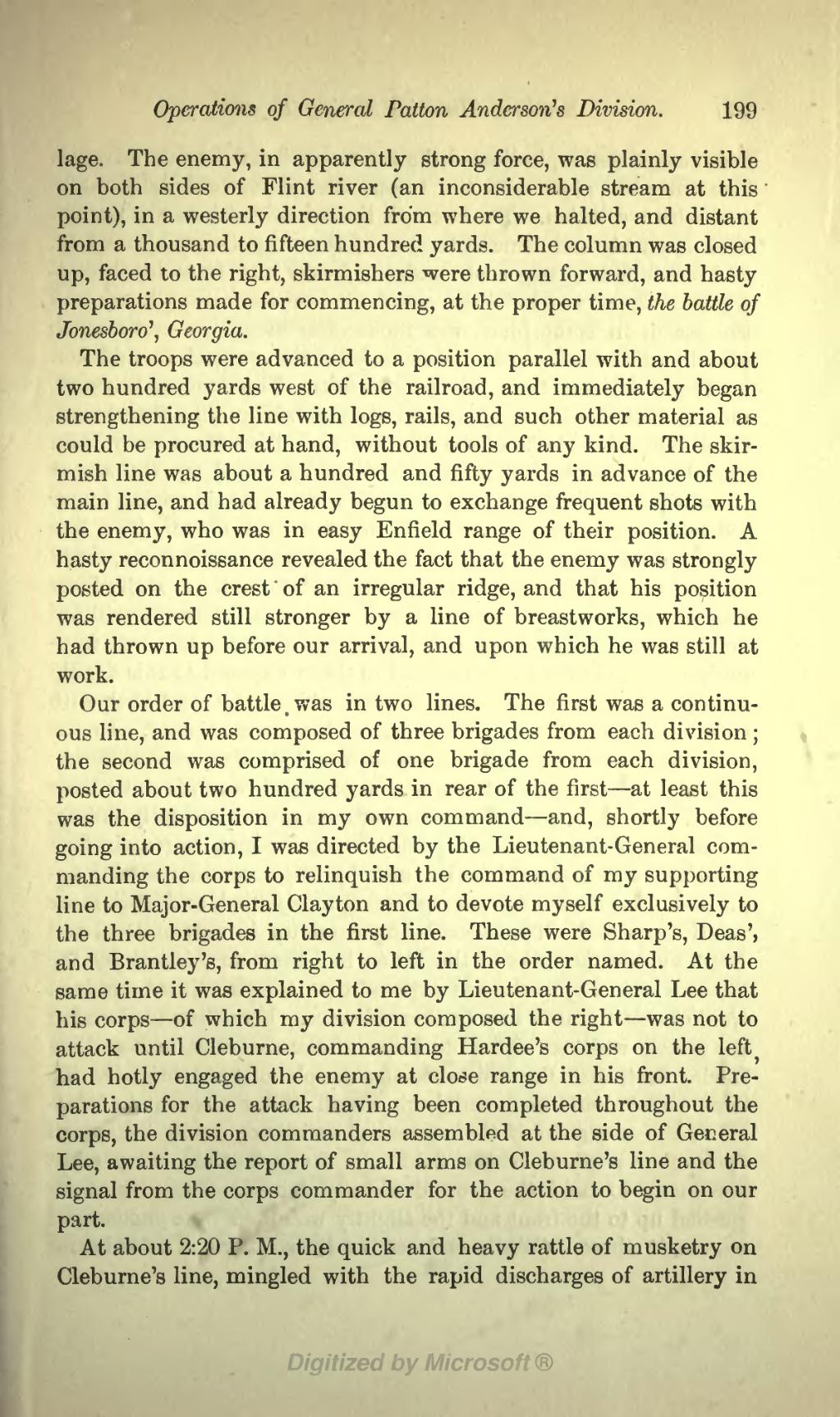lage. The enemy, in apparently strong force, was plainly visible on both sides of Flint river (an inconsiderable stream at this point), in a westerly direction from where we halted, and distant from a thousand to fifteen hundred yards. The column was closed up, faced to the right, skirmishers were thrown forward, and hasty preparations made for commencing, at the proper time, the battle of Jonesboro', Georgia.
The troops were advanced to a position parallel with and about two hundred yards west of the railroad, and immediately began strengthening the line with logs, rails, and such other material as could be procured at hand, without tools of any kind. The skirmish line was about a hundred and fifty yards in advance of the main line, and had already begun to exchange frequent shots with the enemy, who was in easy Enfield range of their position. A hasty reconnoissance revealed the fact that the enemy was strongly posted on the crest of an irregular ridge, and that his position was rendered still stronger by a line of breastworks, which he had thrown up before our arrival, and upon which he was still at work.
Our order of battle was in two lines. The first was a continuous line, and was composed of three brigades from each division; the second was comprised of one brigade from each division, posted about two hundred yards in rear of the first—at least this was the disposition in my own command—and, shortly before going into action, I was directed by the Lieutenant-General commanding the corps to relinquish the command of my supporting line to Major-General Clayton and to devote myself exclusively to the three brigades in the first line. These were Sharp's, Deas', and Brantley's, from right to left in the order named. At the same time it was explained to me by Lieutenant-General Lee that his corps—of which my division composed the right—was not to attack until Cleburne, commanding Hardee's corps on the left, had hotly engaged the enemy at close range in his front. Preparations for the attack having been completed throughout the corps, the division commanders assembled at the side of General Lee, awaiting the report of small arms on Cleburne's line and the signal from the corps commander for the action to begin on our part.
At about 2:20 P. M., the quick and heavy rattle of musketry on Cleburne's line, mingled with the rapid discharges of artillery in
